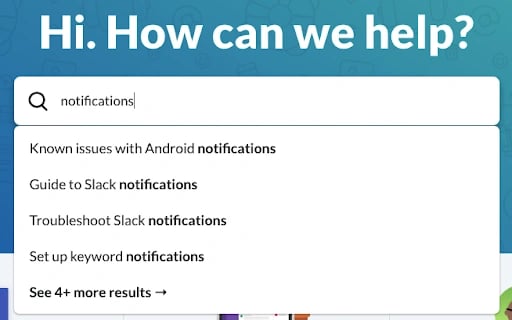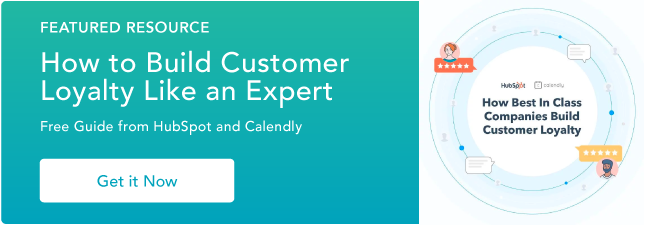The funny thing is, most of us aren’t consistent when we say things like this. Some companies get the benefit of the doubt when they let us down, and that’s because they’ve built up goodwill with us over time. It’s harder to walk away from these companies that have continuously exceeded our expectations and have fallen short only once or twice.
Customer goodwill is a powerful business asset. It plays a major role in customer retention and can contribute to acquisition as well.
In this post, let’s explore exactly what customer goodwill is, how to generate it, and review examples of companies that have built up goodwill over time.
What Is Customer Goodwill?
Customer goodwill is an intangible asset that businesses obtain through providing consistent, high-quality customer service. It accounts for non-quantifiable returns that are difficult to measure and categorize, like customer loyalty, brand reputation, and customer value.
Goodwill plays an important role in your long-term relationship with customers. The more you build up, the stronger the relationship becomes. This not only keeps your customers engaged with your products and services but also provides a safety net in case your business makes a mistake.
Think of goodwill as an insurance policy with your customers. The more you’ve invested in it, the more likely your customers will forgive you when something goes wrong. If you neglect it or don’t build it at all, your customers won’t trust you to make things right. This adds friction to the support experience that results in difficult cases for your reps and, potentially, churn.
If you’re looking to build goodwill, it’s not going to happen overnight. You need to make a long-term commitment to customer needs and continuously surpass their expectations.
The tips in the next section can help you get started.
How to Build Goodwill With Customers
Below are a few ways to generate goodwill with your customer base.
1. Excellent Product Quality
It doesn’t matter if you’re selling retail products, B2B software, or a subscription service, product quality is the most reliable way to build goodwill. If your product is superior to your competitors, customers will be hesitant to abandon you, even if you make a few small mistakes.
2. Reliable Support Channels
Consistency is key to building rapport with customers and generating goodwill. If you constantly are solving their problems, they’ll trust your support channels over time. Eventually, if you do encounter a crisis, your loyal following will give you the opportunity to correct the problem because you have a proven track record of doing so.
3. Long-Term Customer Relations
As we highlighted above, goodwill is the product of nurturing long-term relationships with your customers. Keeping them engaged with your products, services, and promotional content will remind customers about the value that your business brings to them.
If you need to, refer to your customer journey map. Look for areas where you can increase engagement after a purchase is made. Don’t focus on cross-selling or upselling, instead, try to add more value to the customer experience.
4. Proactive Customer Service
Proactive customer service clears roadblocks for customers before they even know they existed. This should be the primary job of your customer success team. If they spot a potential issue for a customer, it’s up to them to either help avoid the problem or alert them to it.
5. Customer Feedback Collection
Asking your customers to provide feedback yields two benefits for your business. First, it shows you what customers want to see from your brand and gives you data that can optimize your offers. Second, it shows customers that you value their opinion. By asking for their input then using it, you demonstrate that your intentions are sincere and that you actually listen to your customers.
Now that you have an idea for how you can build goodwill, let’s look at a few companies that have put these strategies into action.
Examples of Customer Goodwill
1. Starbucks
Starbucks leverages its unique loyalty program to build goodwill with its customers. It’s free to sign up, and members receive cool perks like a complimentary drink on their birthday and free refills. They also get priority treatment inside Starbucks locations. When they place an order through the rewards app, they can skip the line and go right to the pickup station.

2. Ben & Jerry’s
Ben & Jerry’s isn’t your average ice cream company. From hosting a renowned ice cream eating contest to initiating a variety of corporate social responsibility campaigns, Ben & Jerry’s has established itself as a customer-centric business committed to its customers’ ice cream and non-ice cream related needs.
One way this business builds goodwill is through customer feedback. Ben & Jerry’s cares so much about its customers’ opinions that it invited its most unhappy customers to tour its facilities. They wanted these customers to judge whether or not the company was listening to their criticisms. This not only showed customers that their input mattered, but also generated buzz about the company’s commitment to customer satisfaction.
3. Natura
Natura is a cosmetics brand that cares deeply about its customers’ interest in renewable and sustainable resources. In fact, it was named the 15th most sustainable company in the world because of its commitment to using resources from the Amazon without harming the environment or its people. The company is also carbon neutral and continues to reshape its manufacturing and packaging to eliminate any unnecessary waste.
4. Slack
Slack puts a lot of effort into enhancing the customer experience after a business signs up for its service. Not only does it offer a super smooth onboarding process, but it also has a built-in "Slackbot" that assists users with the software.
Slack also has an extensive knowledge base and community forum. These self-service options are easy-to-use and provide customers with troubleshooting tips without having to reach out to a support representative.

For more ways to retain customers, learn how to create a customer loyalty program.
.png?width=112&height=112&name=Image%20Hackathon%20%E2%80%93%20Square%20(30).png)






